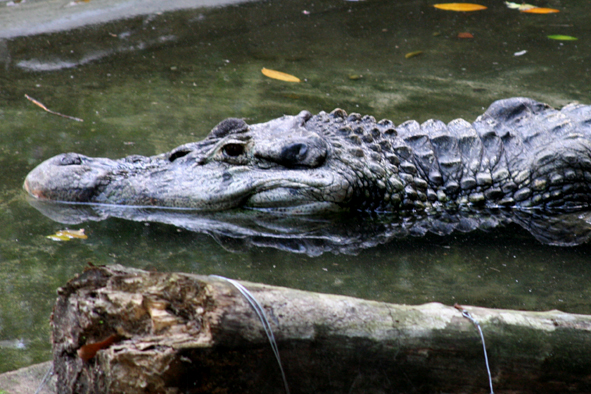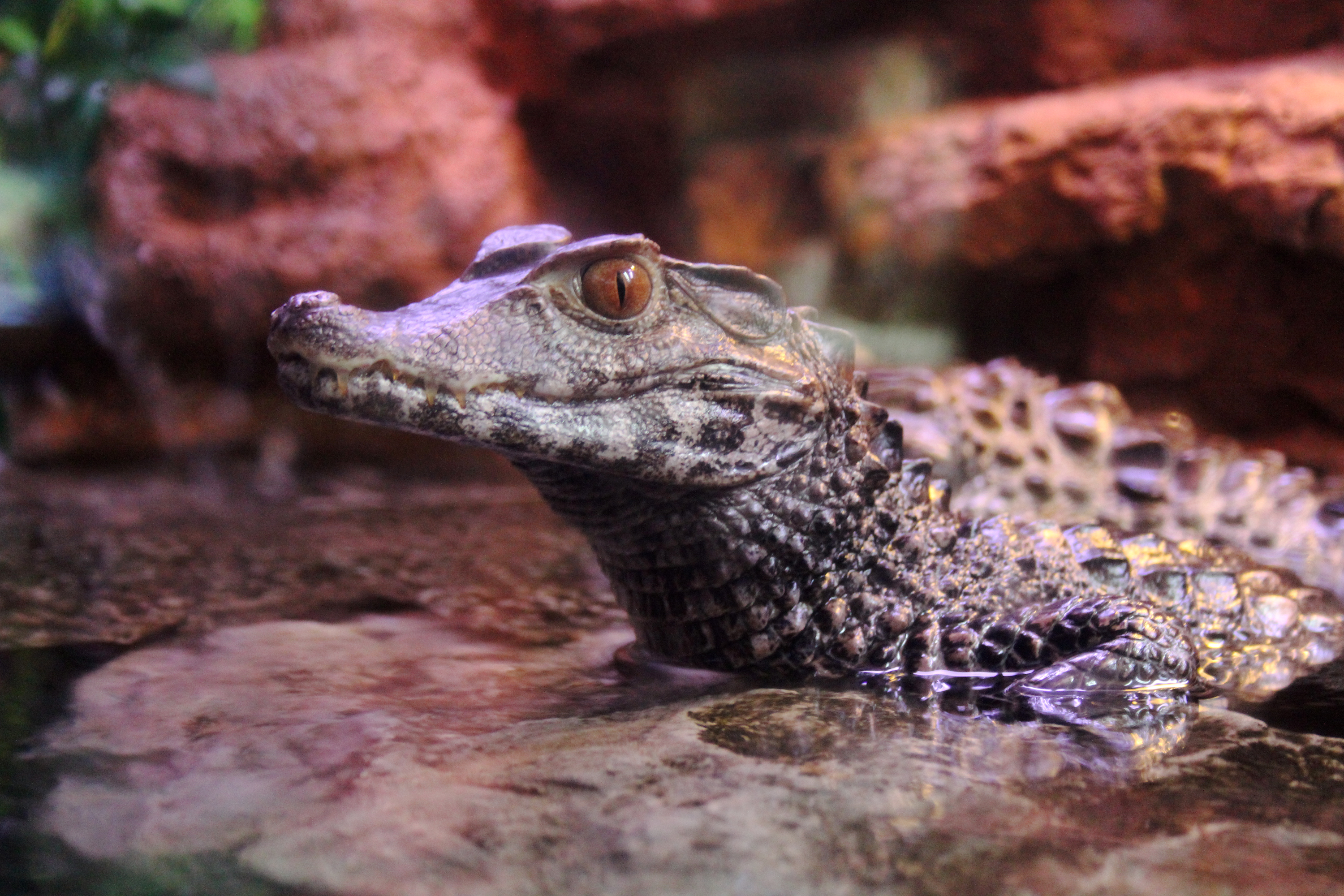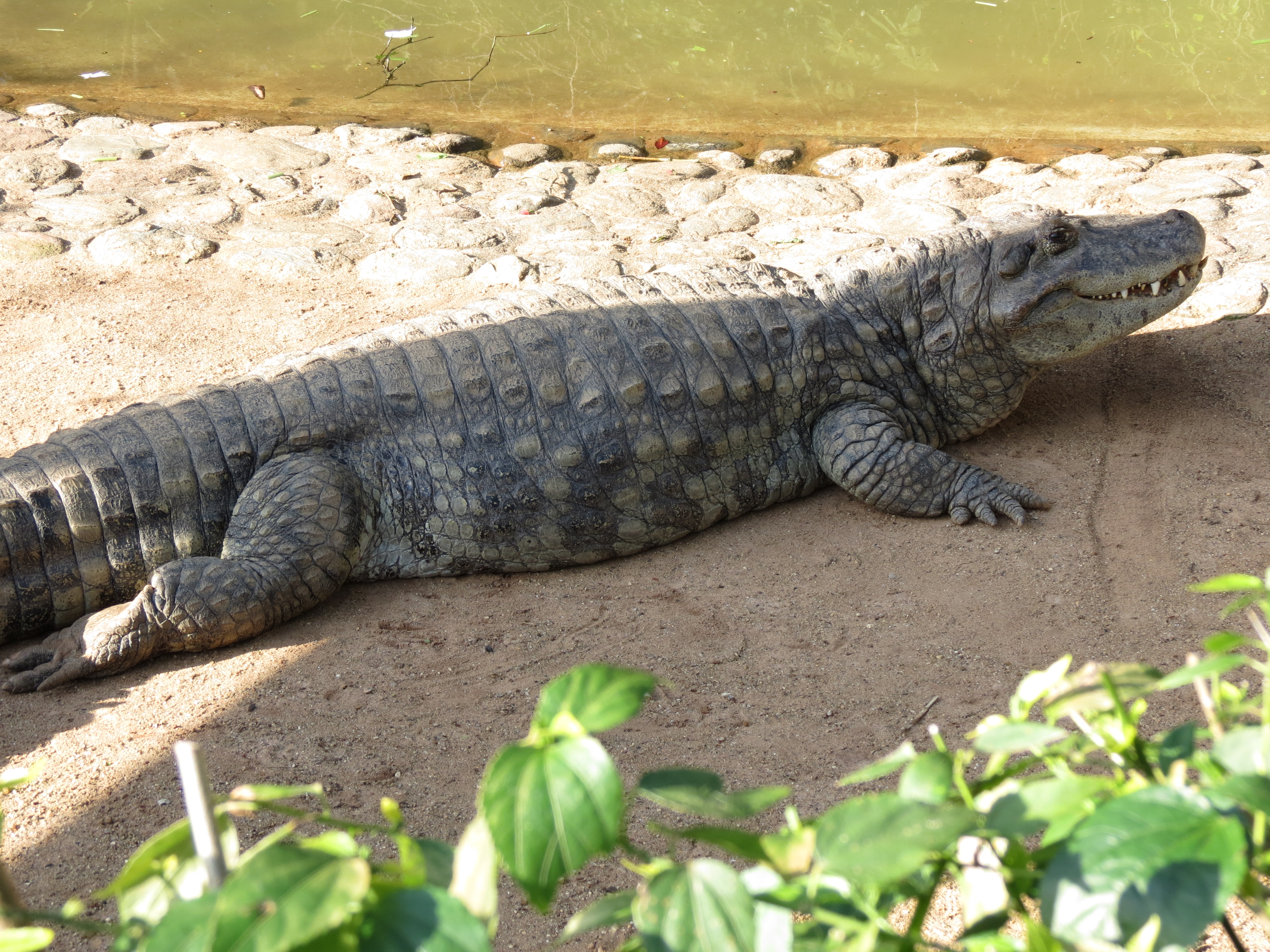Caiman on:
[Wikipedia]
[Google]
[Amazon]
A caiman (also cayman as a variant spelling) is an alligatorid belonging to the 





subfamily
In biological classification, a subfamily (Latin: ', plural ') is an auxiliary (intermediate) taxonomic rank, next below family but more inclusive than genus
Genus ( plural genera ) is a taxonomic rank used in the biological classifica ...
Caimaninae, one of two primary lineages within the Alligatoridae family
Family (from la, familia) is a group of people related either by consanguinity (by recognized birth) or affinity (by marriage or other relationship). The purpose of the family is to maintain the well-being of its members and of society. Idea ...
, the other being alligator
An alligator is a large reptile in the Crocodilia order in the genus ''Alligator'' of the family Alligatoridae. The two extant species are the American alligator (''A. mississippiensis'') and the Chinese alligator (''A. sinensis''). Additional ...
s. Caimans inhabit Mexico
Mexico (Spanish language, Spanish: México), officially the United Mexican States, is a List of sovereign states, country in the southern portion of North America. It is borders of Mexico, bordered to the north by the United States; to the so ...
, Central
Central is an adjective usually referring to being in the center of some place or (mathematical) object.
Central may also refer to:
Directions and generalised locations
* Central Africa, a region in the centre of Africa continent, also known a ...
and South America
South America is a continent entirely in the Western Hemisphere and mostly in the Southern Hemisphere, with a relatively small portion in the Northern Hemisphere at the northern tip of the continent. It can also be described as the sou ...
from marshes and swamps to mangrove rivers and lakes. They have scaly skin and live a fairly nocturnal existence. They are relatively small-sized crocodilia
Crocodilia (or Crocodylia, both ) is an order of mostly large, predatory, semiaquatic reptiles, known as crocodilians. They first appeared 95 million years ago in the Late Cretaceous period ( Cenomanian stage) and are the closest livi ...
ns with an average maximum weight of depending on species, with the exception of the black caiman
The black caiman (''Melanosuchus niger'') is a species of large crocodilian and is the largest species of the family Alligatoridae. It is a carnivorous reptile that lives along slow-moving rivers, lakes, seasonally flooded savannas of the Amazon ...
(''Melanosuchus niger''), which can grow more than in length and weigh in excess of 1,000 kg (2,200 Ib). The black caiman is the largest caiman species in the world and is found in the slow-moving rivers and lakes that surround the Amazon basin. The smallest species is the Cuvier's dwarf caiman (''Paleosuchus palpebrosus''), which grows to long. There are six different species of caiman found throughout the watery jungle habitats of Central and Southern America. The average length for most of the other caiman species is about long.
Caimans are distinguished from alligators, their closest relatives, by a few defining features: a lack of a bony septum between the nostrils, ventral armor composed of overlapping bony scutes formed from two parts united by a suture, and longer and sharper teeth than alligators, plus caimans tend to be more agile and crocodile-like in their movements. The calcium rivets on caiman scales make their hides stiffer and thus less valuable than those of alligators and crocodiles, both of which have a similar appearance, but are more pliable.
Several extinct forms are known, including '' Purussaurus'', a giant Miocene
The Miocene ( ) is the first geological epoch of the Neogene Period and extends from about (Ma). The Miocene was named by Scottish geologist Charles Lyell; the name comes from the Greek words (', "less") and (', "new") and means "less recen ...
genus that grew to and the equally large '' Mourasuchus'', which had a wide duck
Duck is the common name for numerous species of waterfowl in the family Anatidae. Ducks are generally smaller and shorter-necked than swans and geese, which are members of the same family. Divided among several subfamilies, they are a form ...
-like snout.




Behavior
Caimans are predators and, like alligators and crocodiles, their diet largely consists of fish. Caimans also hunt insects, birds, and small mammals and reptiles. Due to the large size and ferocious nature of caimans, they have few natural predators within their environments. Humans are the main predators of caimans, as they have been hunted for their meat and skin.Jaguar
The jaguar (''Panthera onca'') is a large cat species and the only living member of the genus ''Panthera'' native to the Americas. With a body length of up to and a weight of up to , it is the largest cat species in the Americas and the th ...
s, anacondas
Anacondas or water boas are a group of large snakes of the genus ''Eunectes''. They are found in tropical South America. Four species are currently recognized.
Description
Although the name applies to a group of snakes, it is often used to r ...
and crocodiles are the only other predators of caimans, but they usually prey on the smaller specimens. During summer or droughts, caimans may dig a burrow and go into a form of summer hibernation called aestivation
Aestivation ( la, aestas (summer); also spelled estivation in American English) is a state of animal dormancy, similar to hibernation, although taking place in the summer rather than the winter. Aestivation is characterized by inactivity and a ...
.
Female caimans build a large nest in which to lay their eggs. These nests can be more than wide. Female caimans lay between 10 and 50 eggs, which hatch within about six weeks. Once they have hatched, the mother caiman takes her young to a shallow pool of water, where they can learn how to hunt and swim.
Phylogeny
Caimaninae iscladistically
Cladistics (; ) is an approach to biological classification in which organisms are categorized in groups ("clades") based on hypotheses of most recent common ancestry. The evidence for hypothesized relationships is typically shared derived char ...
defined as ''Caiman crocodylus'' (the spectacled caiman) and all species closer to it than to ''Alligator mississippiensis'' (the American alligator). This is a stem-based definition for caimaninae, and means that it includes more basal extinct
Extinction is the termination of a kind of organism or of a group of kinds (taxon), usually a species. The moment of extinction is generally considered to be the death of the last individual of the species, although the capacity to breed and ...
caimanine ancestors that are more closely related to living caimans than to alligators.
Below is a cladogram
A cladogram (from Greek ''clados'' "branch" and ''gramma'' "character") is a diagram used in cladistics to show relations among organisms. A cladogram is not, however, an evolutionary tree because it does not show how ancestors are related to ...
showing the phylogeny
A phylogenetic tree (also phylogeny or evolutionary tree Felsenstein J. (2004). ''Inferring Phylogenies'' Sinauer Associates: Sunderland, MA.) is a branching diagram or a tree showing the evolutionary relationships among various biological s ...
of Caimaninae, modified from Hastings ''et al.'' (2013).
Taxonomy
* Subfamily Caimaninae ** Genus †'' Acresuchus'' **Genus †''Brachychampsa
''Brachychampsa'' is an extinct genus of alligatoroid, possibly a basal caiman. Specimens have been reported from New Mexico, Colorado, Wyoming, Montana, North and South Dakota, New Jersey, and Saskatchewan, though only those from Montana, Utah ...
''
** Genus †'' Bottosaurus''
** Genus †
A dagger, obelisk, or obelus is a typographical mark that usually indicates a footnote if an asterisk has already been used. The symbol is also used to indicate death (of people) or extinction (of species). It is one of the modern descendan ...
'' Centenariosuchus''
** Genus †'' Chinatichampsus''
** Genus †'' Protocaiman''
** Genus †'' Kuttanacaiman''
** Genus †'' Gnatusuchus''
** Genus †'' Culebrasuchus''
** Genus †'' Eocaiman''
** Genus †'' Globidentosuchus''
** Genus ''Paleosuchus
''Paleosuchus'' is a South American genus of reptiles in the subfamily Caimaninae of the family Alligatoridae. They are the smallest members of the order Crocodilia in the Americas
The Americas, which are sometimes collectively called ...
''
*** ''P. palpebrosus'', Cuvier's dwarf caiman
*** ''P. trigonatus'', smooth-fronted caiman
The smooth-fronted caiman (''Paleosuchus trigonatus''), also known as Schneider's dwarf caiman or Schneider's smooth-fronted caiman,Purussaurus''
** Genus †'' Mourasuchus''
** Genus †'' Necrosuchus''
** Genus †'' Orthogenysuchus''
** Genus †''
Tsoabichi
''Tsoabichi'' is an extinct genus of caimanine crocodylian. Fossils are known from the Green River Formation in Wyoming, and date back to the Ypresian stage of the Eocene (Wasatchian stage of North American age). The genus was named and descri ...
''
** Genus '' Caiman''
*** ''C. yacare'', yacare caiman
*** ''C. crocodilus'', spectacled caiman
**** ''C. c. crocodilus'', spectacled caiman
**** ''C. c. apaporiensis'', Rio Apaporis caiman
**** ''C. c. fuscus'', Brown caiman
*** †''C. lutescens''
*** †'' C. venezuelensis''
*** †'' C. wannlangstoni''
*** †'' C. brevirostris''
*** ''C. latirostris'', broad-snouted caiman
The broad-snouted caiman (''Caiman latirostris'') is a crocodilian in the family Alligatoridae found in eastern and central South America, including southeastern Brazil, northern Argentina, Uruguay, Paraguay, and Bolivia. It is found mostly in ...
** Genus ''Melanosuchus''
*** †'' M. fisheri''
*** ''M. niger'', black caiman
The black caiman (''Melanosuchus niger'') is a species of large crocodilian and is the largest species of the family Alligatoridae. It is a carnivorous reptile that lives along slow-moving rivers, lakes, seasonally flooded savannas of the Amazon ...
References
{{Taxonbar, from=Q478759 Alligatoridae Selandian first appearances Extant Selandian first appearances de:Kaimane mk:Кајмани